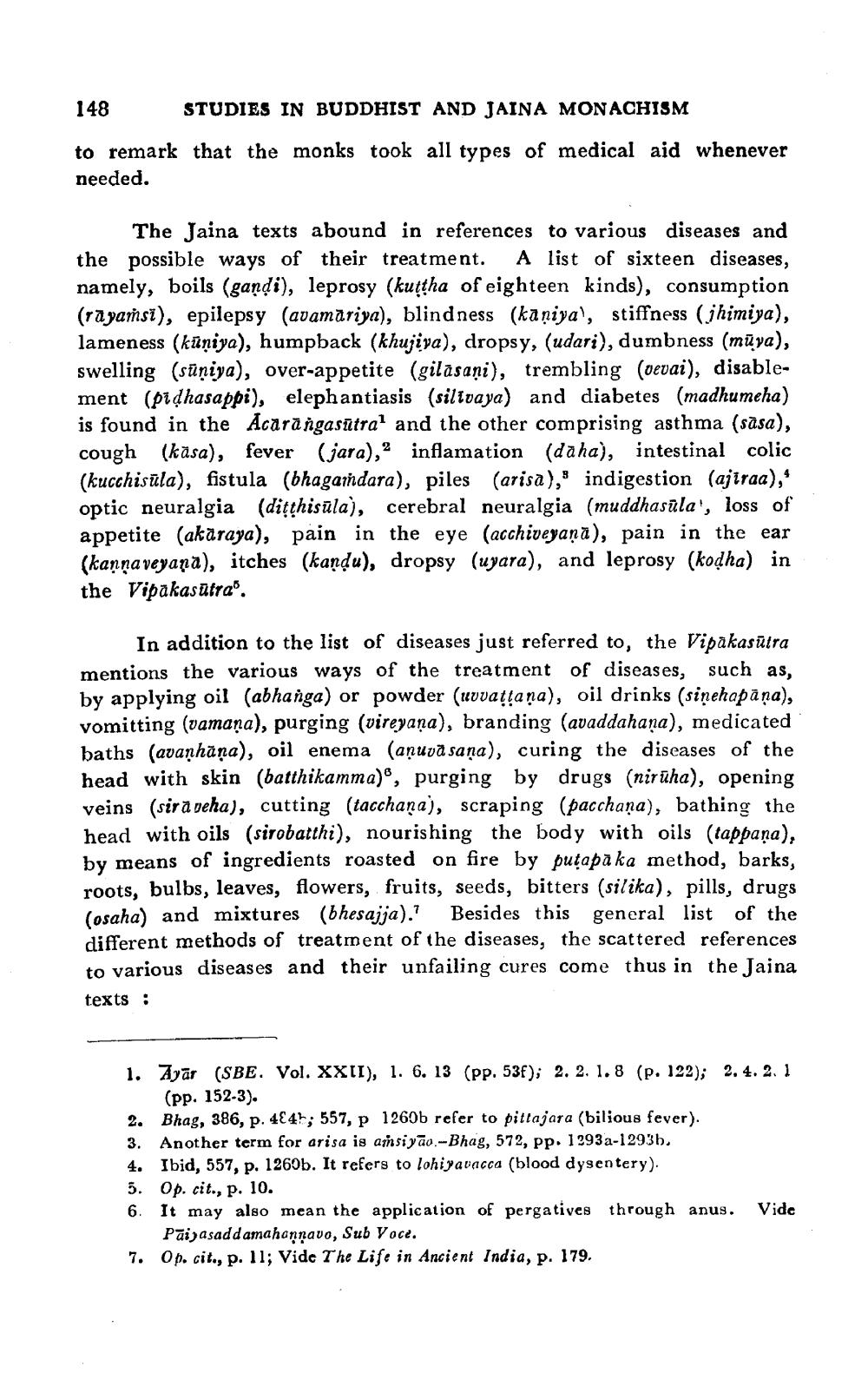________________
148
STUDIES IN BUDDHIST AND JAINA MONACHISM
to remark that the monks took all types of medical aid whenever needed.
The Jaina texts abound in references to various diseases and the possible ways of their treatment. A list of sixteen diseases, namely, boils (gandi), leprosy (kuttha of eighteen kinds), consumption (rayamsi), epilepsy (avamariya), blindness (kaniyal, stiffness (jhimiya), lameness (kūniya), humpback (khujiya), dropsy, (udari), dumbness (mūya), swelling (süniya), over-appetite (gilasani), trembling (vevai), disablement (pidhasappi), elephantiasis (silivaya) and diabetes (madhumeha) is found in the Acarangasatra' and the other comprising asthma (sāsa), cough (kasa), fever (jara),2 inflamation (daha), intestinal colic (kucchisüla), fistula (bhagaíndara), piles (arisa),' indigestion (ajiraa)," optic neuralgia (ditthisūla), cerebral neuralgia (muddhasūla', loss of appetite (akaraya), pain in the eye (acchiveyaņā), pain in the ear (kanna veyana), itches (kandu), dropsy (uyara), and leprosy (kodha) in the Vipakasūtra".
In addition to the list of diseases just referred to, the Vipakasūtra mentions the various ways of the treatment of diseases, such as, by applying oil (abhanga) or powder (uvvattaņa), oil drinks (sinehapāna), vomitting (vamaņa), purging (vireyana), branding (avaddahana), medicated baths (avaṇhāņa), oil enema (aņuvā saņa), curing the diseases of the head with skin (batthikamma)”, purging by drugs (nirūha), opening veins (sira neha), cutting (tacchana), scraping (pacchana), bathing the head with oils (sirobatthi), nourishing the body with oils (tappaņa), by means of ingredients roasted on fire by putapaka method, barks, roots, bulbs, leaves, flowers, fruits, seeds, bitters (silika), pills, drugs (osaha) and mixtures (bhesajja). Besides this general list of the different methods of treatment of the diseases, the scattered references to various diseases and their unfailing cures come thus in the Jaina texts :
1. Ayar (SBE. Vol. XXII), 1. 6. 13 (pp. 53f); 2. 2. 1.8 (p. 122); 2. 4.2.1
(pp. 152-3). 2. Bhag, 386, p. 4€45; 557, p 1260b refer to pittajara (bilious fever). 3. Another term for arisa is ansiyão.--Bhag, 572, pp. 1293a-1293b. 4. Ibid, 557, p. 1260b. It refers to lohiyavacca (blood dysentery). 5. Op. cit., p. 10. 6. It may also mean the application of pergatives through anus. Vide
Pāiyasaddamahannavo, Sub Voce. 7. Op. cit., p. 11; Vide The Life in Ancient India, p. 179.




